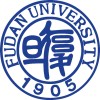
Work-To-Rest Ratios
HyperthermiaThe purpose of the study is to compare physiological responses to two hours of work adhering to two variations of a work-to-rest ratio in a hot environment.

Heat Waves and the Elderly - Cooling Modalities
AgingHyperthermiaThe purpose of this study is to assess how well cooling modalities work in reducing cardiovascular stress of the elderly to heat wave conditions

Acute Health Effects of High Temperature Exposure
Cardiovascular SystemRespiratory System1 moreThis is a randomized controlled human exposure crossover study. Investigators aims to assess the acute effects of high temperature exposure and the underlying mechanisms.

Diathermy vs Scalpel in Abdominal Incision in Women Undergoing CS
IncisionSurgicalCesarean section is surging worldwide. For an extended period of surgical practice, the scalpel has been well-known as a gold-standard tool for making surgical incisions. The diathermy, electrocautery, is a substitute.

Biomarkers to Assess Acute Kidney Injury Risk During Heat Strain
HyperthermiaKidney Injury1 moreProlonged, high intensity work in a hot environment results in significant strain on the body, known as heat strain. Heat strain in hot occupational settings such as agriculture, fire suppression, and military work can lead to ~20% of workers exceeding the glomerular filtration rate indicated thresholds for acute kidney injury (AKI). However, it is unclear whether these individuals truly experienced AKI or if these were normal, healthy physiologic responses. To better determine if AKI occurs in the staggering number of workers previously reported, AKI biomarkers are needed in addition to kidney function markers (e.g., glomerular filtration rate) to characterize this response. The product of urinary tissue inhibitor of metalloproteinase 2 (TIMP-2) and insulin-like growth factor binding protein 7 (IGFBP7) is a promising Food and Drug Administration approved biomarker indicating risk of AKI and is currently used in hospitalized individuals. The usefulness of this biomarker in determining AKI in healthy individuals during heat strain is now beginning to be understood. Consecutive days of heat strain can result in repeated AKI, which is hypothesized to lead to chronic kidney disease. There is an epidemic of chronic kidney disease of non-traditional causes occurring in workers who undergo repeated days heat strain, including approximately 15% of outdoor workers in Central America. Of the few studies that investigated consecutive days of work in the heat, we demonstrated that participants exceed the glomerular filtration rate indicated threshold for AKI during consecutive days of heat strain. This project will determine whether [TIMP-2 x IGFBP7] increases during occupational relevant heat exposures in a healthy, active population. Additionally, this project will compare the impact of repeated exposures to a hot environment on risk of AKI.

Cardiovascular Responses to Heat Waves in the Elderly
AgingHyperthermiaThe purpose of this study is to assess the cardiovascular responses of the elderly to heat wave conditions

Prospective Hyperthermia Database in Cancer Patients (HT Register)
HyperthermiaCancerThis monocentric study registry records all cancer patients at the Charité which are treated with hyperthermia to examine the therapeutic use of hyperthermia in cancer patients in the general application and to obtain an accurate risk-benefit balance After confinement in this database are the patients prospectively in order to complications, disease status and survival status tracked. Furthermore there is the possibility in the course of this study to an optional take part in translational accompanying research with the aim of prognostic factors for response to hyperthermia treatment.

Short Antibiotic Treatment in High Risk Febrile Neutropenia
Febrile NeutropeniaInfections are a common complication in patients with cancer. They are a significant cause of complications and death in this population. Patients with cancer and low neutrophil counts due to chemotherapy or disease often have a fever and receive antibiotic treatment. The optimal duration of this treatment is largely unknown. Late, there have been some data suggesting the safety of early discontinuation of antibiotics, though most centers still give more prolonged antibiotic therapies in this situation. The unnecessary prolonged antibiotic use may increase infections with multi-drug-resistant bacteria, which carry a high death rate. Also, an increase in infections caused by Clostridioides difficile and an increase in fungal infections can happen. However, some are concerned that stopping antibiotics while the neutrophil count is still low will result in life-threatening infections. Our study aims to test whether shorter antibiotic treatment in these situations is as safe as more prolonged treatment, resulting in better antibiotic prescription practices in this population.

Aging and Gastrointestinal Barrier Function
AgingHyperthermiaThe purpose of this study is to assess the gastrointestinal responses of the elderly during hyperthermia.

RVF and Other Emerging Infectious Diseases in East and Central Africa
Rift Valley FeverHemorrhagic Fevers1 moreRift Valley fever (RVF), a disease transmitted from livestock (cattle, sheep, goats, camels) to humans more commonly occurs in the East and Central Africa (ECA) regions where more than 15 major epidemics affecting more than one country have been reported over the past 50 years. Within the region, there are specific areas, referred to as hotspots, which support RVF virus maintenance via low-level virus circulation between animals, humans, and mosquitoes. Most outbreaks originate from these hotspots. Our goal is to conduct studies in RVF hotspots in four ECA countries, Kenya, Uganda, Tanzania, and Democratic Republic of Congo (DRC) to determine the burden of RVF disease among humans, wildlife and livestock during inter-epidemic periods (IEPs) and discover circulation of undetected infectious diseases. This information is important for use in developing an early warning system and possibly a vaccination strategy. The study will take place in Uganda, Kenya, Tanzania and Democratic Republic of Congo
